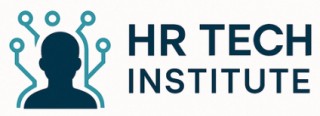
Eligibility Criteria for Short-Term Disability in Florida
Qualifications to Avail Short-Term Disability Benefits in the Sunshine State
In Florida, understanding who is eligible for short-term disability benefits is essential for both employers and employees. While there isn't a state-mandated short-term disability (STD) insurance program like those in California or New York, employees may rely on benefits provided through their employer’s private disability insurance policies. These insurance policies usually outline the criteria required to qualify for coverage.
Typically, the eligibility criteria focus on several factors:
- Employment Status: The employee must usually be a full-time worker, having served a defined waiting period, often ranging from a few weeks to a few months, before benefits can be activated.
- Medical Condition Verification: A certified medical professional must verify the employee's illness or injury. This verification establishes that the employee’s medical condition truly restricts their ability to perform work duties.
- Temporary Nature of Disability: The disability must be short-term, generally lasting for a period of several weeks up to a year, and should not qualify as a long-term disability.
- Coverage Under the Employer’s Disability Policy: Employees must be enrolled in the employer’s STD policy to receive benefits. If an employer offers disability insurance, understanding the specific terms, including the elimination period and benefits payable, is crucial.
- Security Disability and Social Security Benefits-excluded: As a rule, these benefits are designed to complement, and not replace, social security disability or workers' compensation benefits.
Ensuring that all these criteria are met is vital. With this understanding, both employers and employees can effectively navigate the complex landscape of Florida's disability benefits, ensuring that policies are aligned with the needs and security of both parties. This knowledge not only aids in the application process for benefits but also supports overall workforce management.
Application Process for Short-Term Disability Benefits
Navigation Through the Application Process
Understanding the application process for short-term disability benefits in Florida is crucial, as it directly impacts the timeliness and effectiveness of benefits coverage for employees. The process begins when an employee experiences a medical condition that results in a partial or total disability, preventing them from performing their work duties. Employees should first review their employer's disability policy to understand their specific eligibility for benefits. It's essential to communicate with the employer's human resources (HR) department to clarify the terms associated with short-term disability insurance, including the elimination period and benefits payable. Once eligibility is confirmed, employees must submit a claim form, accompanied by necessary medical documentation to support their disability claim. This includes detailing the nature of the illness or injury and the expected recovery period. Engaging with HR professionals during this stage can offer guidance through the complexities of the policy, thus ensuring a smoother process. Moreover, it's vital to acknowledge the potential involvement of social security disability or workers' compensation benefits if the injury or illness extends beyond short-term disability support. Employees should also be aware of the waiting period before benefits are paid and any specific timeframes outlined in the organization's disability coverage. Lastly, staying informed about changes in state regulations or policy amendments is crucial. For instance, understanding the implications of New Jersey's sick time law could provide valuable insights for Florida employees, given the evolving landscape of labor laws and benefits across states.Role of Human Resources Technology in Managing Disability Claims
Optimizing HR Tech for Managing Disability Claims
The integration of human resources technology in managing disability claims can transform how companies handle short-term disability in Florida. By leveraging digital platforms, HR departments can efficiently navigate the complexities of disability policies and streamline the entire claims process. Advanced HR software solutions are pivotal in managing the influx of short-term and long-term disability insurance claims. These platforms provide comprehensive tools that not only simplify the documentation of medical conditions and illnesses but also facilitate accurate calculations of benefits payable during the waiting period and beyond.- Automation and Efficiency: Automated HR systems reduce the administrative burden by ensuring that disability claims are processed more swiftly and accurately. This is crucial in maintaining employee satisfaction with timely compensation.
- Data Security and Compliance: With sensitive employee data involved, HR technology ensures robust data security measures against unauthorized access while maintaining compliance with state and federal regulations, including social security disability requirements.
- Customization and Flexibility: Modern disability coverage tools allow for customization specific to the employer's policy, making it easier to manage cases of partial disability and adjust workers' compensation as needed.
Challenges in Implementing Short-Term Disability Programs
Overcoming Barriers in Florida's Disability Program Implementation
Implementing short-term disability insurance programs in Florida can be quite challenging for employers. These challenges revolve mainly around regulatory compliance, cost implications, and the complexity of policy administration. Let’s delve into some of the hurdles organizations might face. Firstly, understanding the fine print of disability insurance policies, which vary by state, is critical. In Florida, like many states, ensuring adherence to legal frameworks for disability coverage involves navigating a labyrinth of rules surrounding social security disability, workers' compensation, and medical benefits. The uncertainty around changing regulations can also make it difficult for employers to define a coherent policy that stands the test of time. Cost considerations come into play significantly. Employers often find themselves weighing the financial burden of short-term disability insurance against its benefits. Establishing a balance between providing adequate employee coverage and maintaining manageable cash flow is no easy task. Short-term disability benefits payable by the employer during an employee's medical leave contribute to their overall compensation and security, yet can pose financial strain, especially for smaller businesses. Administrative challenges also arise — managing short and long-term disability claims requires efficient processes. The complexity of handling data related to employees’ medical conditions, waiting periods, and the benefits paid over a period prompts the need for specialized HR technology solutions. Mismatched systems or inefficient handling can lead to delayed benefits, frustrating employees who rely on these crucial compensations during times of illness or injury. Moreover, it's imperative to ensure a clear communication line between employers and employees. Misunderstandings around policy coverage including elimination periods and compensation benefits often lead to disgruntled, insecure employees. Employers must prioritize transparency to manage expectations and avoid dissatisfaction. Navigating these challenges requires comprehensive planning, efficient use of HR technologies, and a keen understanding of both short and long-term disability trends. These proactive steps help in creating a more secure and supportive work environment for all employees.Impact of Short-Term Disability on Workforce Management
The Influence of Short-Term Disability on Workforce Dynamics
Navigating the intricacies of short-term disability insurance significantly impacts workforce management in Florida. With an increasing number of employees needing to take leave due to medical conditions, employers must be adept in adjusting work schedules and redistributing tasks efficiently. Clear communication and strategic planning are essential when managing gaps created by employees on temporary disability leave. This helps maintain productivity while also providing adequate support for those on leave.- Ensuring Adequate Compensation: Collaborating with disability insurance providers and assessing benefits payable ensures that employees receive the necessary compensation during their waiting period and overall absence. Employers must understand terms of coverage and the conditions under which benefits are paid.
- Addressing Partial and Total Disability: Developing strategies for accommodating both partial disability conditions—where employees might work limited hours or duties—and total disability situations, can mitigate disruptions.
- Policy Alignment and Adaptation: Regularly reviewing and adapting disability policies helps address evolving employee needs. This requires HR teams to stay informed about industry standards and legal requirements concerning workers compensation, security disability, and other social security aspects.
Future Trends in Disability Benefits and HR Technology
Emerging Trends in Disability Benefits and HR Technology
The landscape of disability benefits, particularly short-term disability, is evolving rapidly with the integration of advanced human resources technology. As employers in Florida and beyond strive to enhance their disability benefits programs, several trends are shaping the future of this critical area.
Automation and AI in Claims Processing
One of the most significant trends is the use of automation and artificial intelligence (AI) in managing disability claims. These technologies streamline the application process, reducing the waiting period for employees seeking benefits. By automating routine tasks, HR departments can focus on more complex cases, ensuring that employees receive the compensation benefits they are entitled to in a timely manner.
Enhanced Data Analytics for Better Decision-Making
Data analytics is becoming an indispensable tool for employers. By analyzing data related to employee medical conditions, work patterns, and compensation benefits, companies can make informed decisions about their disability policies. This data-driven approach helps in identifying trends, predicting potential claims, and optimizing the benefits payable to employees.
Integration with Social Security and Workers Compensation Systems
Another trend is the seamless integration of short-term disability programs with social security disability and workers compensation systems. This integration ensures that employees who suffer from illness or injury receive comprehensive coverage, whether it's through temporary disability or long-term disability insurance. Employers are increasingly adopting systems that allow for easy coordination between different types of disability coverage, enhancing the overall security for employees.
Personalized Employee Experience
Personalization is key in today's HR tech landscape. Employers are leveraging technology to offer a more personalized experience for employees navigating disability benefits. This includes tailored communication about policy changes, benefits paid, and the elimination period, ensuring that employees feel supported throughout their recovery period.
Focus on Employee Well-being
Finally, there is a growing emphasis on employee well-being as part of disability benefits programs. Employers recognize that supporting employees during periods of partial or total disability is not just about financial compensation. It's also about providing the necessary resources and support to facilitate a smooth transition back to work, ultimately benefiting both the employee and the employer.













